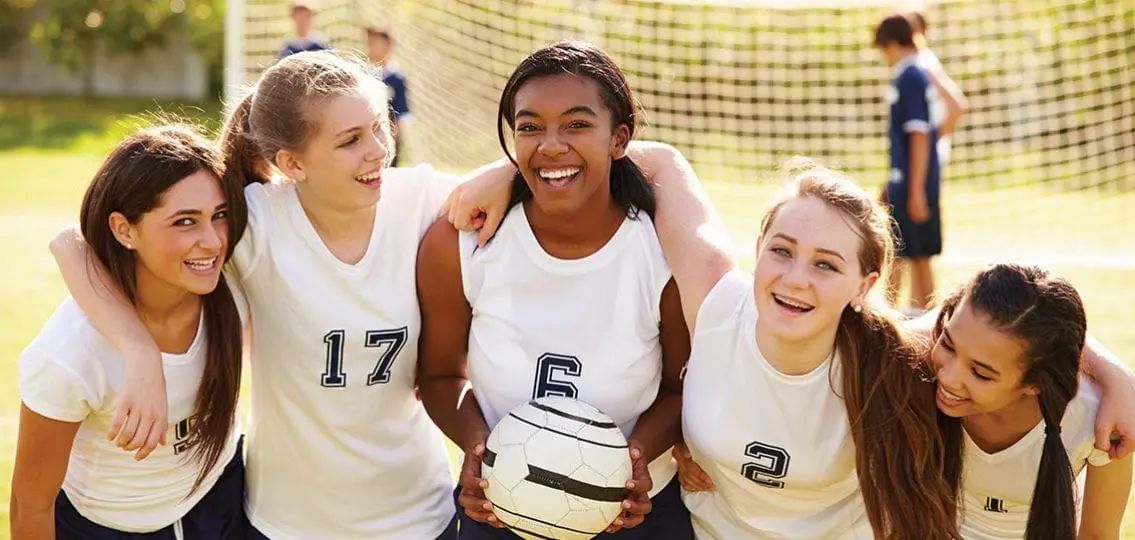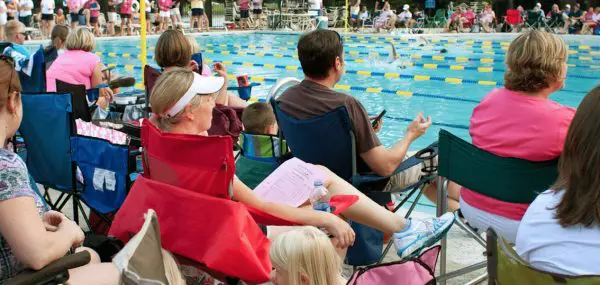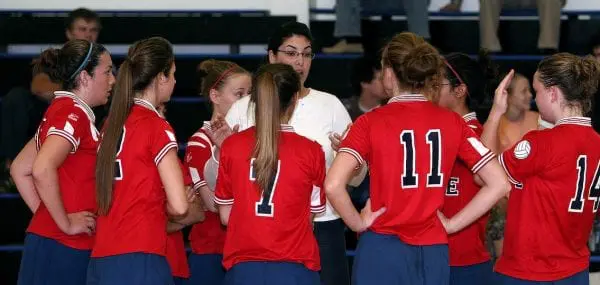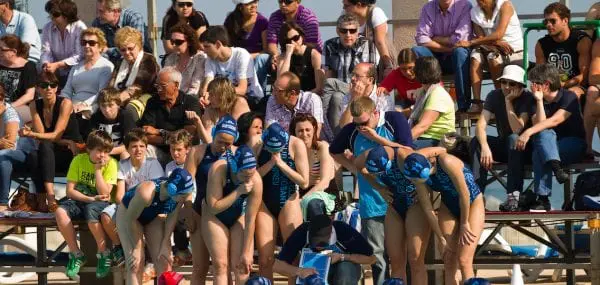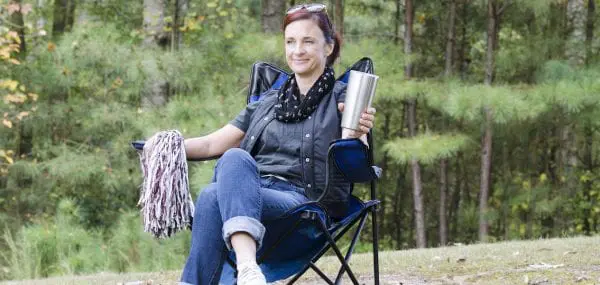Bob Bigelow, former NBA player, had some strong opinions about youth sports. Co-author of Let Kids Play and author of the ebook Youth Sports: Still Failing Our Kids – How to Fix It, Bigelow advocated for making sports better – less competitive and more fun – for kids. Bigelow, who passed away in 2020, shared this evergreen wisdom before his death.
Are Youth Sports Too Competitive?
Q: Do you see a problem with adolescents and sports?
Bigelow: A Michigan State study showed that 10 years old is the greatest point of sports participation in this country. Three years later, 70 percent are gone. That is the sobering reality of what happens between fifth and eighth grade.
Q: Why do you think that happens?
Bigelow: The youth sports system is too competitive. This is where I’ve been trying to slam on the breaks, but with mixed results. We need middle school coaches who will play kids, even at the risk of losing games. They should also do this at the freshman and JV levels at high school. Developing players—not winning—should be the priority. This sometimes falls on deaf ears.
Q: How did we get here?
Bigelow: These days, kids can join youth sports programs in kindergarten, so by late elementary and definitely by middle school, they’ve been playing the sport for six or seven years. And adults, who may have begun with the best intentions, now want to win. So, we increase the playing time of our “best” players and decrease the playing time of our “worst” players. But, what adults don’t understand is that kids are still developing in middle and high school. Making decisions about athletic ability at such an early age eliminates your late bloomers, and there are a whole lot of late bloomers out there. An organization that evaluates the talents of young players leaves kids behind. Adults need to slow down in a system that has sped up.
Q: So, athletic ability is not always obvious by middle school?
Bigelow: Not at all. Child development and physical education studies show that athletic ability prior to puberty is a meaningless indicator of athletic ability post puberty. Your average 10-year-old is 4-foot-9 and 80 pounds. I don’t care if that boy or girl has played 3,000 soccer games; he or she is still 4-foot-9 and 80 pounds. You cannot tell how good a soccer player he or she will be at 16, 17 or 18 years old. But, we cull the wheat from the chaff way too early and get rid of all those kids who aren’t yet the “star” soccer or basketball or whatever players. The whole system is run a muck.
Q: Is there a better solution?
Bigelow: Don’t let an adult near the kids until they are about 12 years old. That’s pretty close to the system I grew up with. There were no organized sports until middle school. I started playing basketball in ninth grade, and I was a first round draft pick in the NBA seven years later. People think that is unbelievable, but I didn’t have any basketball offered in my town until ninth grade.
Q: Why have we gotten so competitive? Is it about scholarships?
Bigelow: Yes, the myth of the abundant athletic scholarships. But, let’s look at the statistics. The NCAA is about 1,100 schools: 350 are Division 1 and 200-250 are Division 2. Division 1 and 2 are allowed to give a certain number of scholarships for athletics each year; Division 3 is not. But, many of these schools then divide these scholarships among many kids. A few years ago, The New York Times interviewed the Villanova baseball coach, who had 25 kids on his team. He had four scholarships to offer, which he split between 15 kids. So, all these parents think, ‘Oh, my kid is going to play baseball at Villanova.’ And the coach says, ‘Well, we can offer you enough money for books.’
Q: In other words, there isn’t much money at all?
Bigelow: There are 7.5-8 million high school athletes in this country. There are approximately 450,000 college athletes, which includes more than NCAA schools. About 3-5 percent of those college athletes are foreign born. So, do the math. Winnow 8 million down to 450,000 and factor that only about 10 percent of them get scholarships. My wife is the longtime women’s swimming coach at Tufts University, a Division 3 school. She’s got 40 kids on her team. They are all college athletes, but none of them has a swimming scholarship, believe me.
Q: It’s sad because if you look at the research, playing sports does a lot of good for teenagers.
Bigelow: Yes, generally that’s the case, and there are a lot of good people out there trying to do it right. The problem is the competitive desire of adults who drive toward younger and younger age groups.
Q: Is that why so many teenagers specialize in one sport year-round?
Bigelow: Specialization is another problem. My rule of thumb is this: if by junior year of high school, you want to take a shot at playing the sport past high school, then specialize. Before that, it’s useless. Absolutely useless. Too many parents of kids are caught up in specialization. It’s not good.
Q: Why?
Bigelow: There is a well-known scientific model in sports called periodization, which basically makes you take time off. This is what pro athletes do – get away from the sport for a period of time. You shouldn’t play a sport year-round, but we are doing this with our adolescents, and we wonder why their knees give out. At the younger levels, variety is the spice of life. Playing multiple sports means using different muscles and experiencing different coaches and different ways of doing things. It’s a real disservice to take that away. As I tell people all the time, in school, we get reading, writing, arithmetic and science. No one says we’re going to do only math this year. People understand a well-rounded education, but they don’t understand well-rounded athletics.
Q: How should parents navigate the system?
Bigelow: Here is a simple one: it is their life, not yours. Whatever activities your teenager would like to do, they should do. If he or she wants to play soccer, but you don’t like soccer, that’s not a reason to keep your kid out. If you were the high school football star, that is not a reason to push your kid into football. Also, learn about the sport your teenager wants to play. You don’t have to become an expert, but know a little bit about it. And when you are on the sidelines at the game, don’t ever bark out directions. Don’t ever yell at a referee. It’s not your game. You are a guest at your child’s game.
Q: Say my freshman wants to play a particular sport at the high school. How do I encourage her, knowing so many other students have been playing for years?
Bigelow: It’s difficult. You hope there is a freshman team. But, some high schools in this country have 2,000 or 3,000 kids, and there may be only 30 to 40 spots available in a particular sport. It’s tough to walk in and earn a spot on that team in those schools. However, some high schools have gotten creative and are offering more and different kinds of sports, like rowing, bowling or even bass fishing. It’s great, and it’s an opportunity for kids to be on a team.
